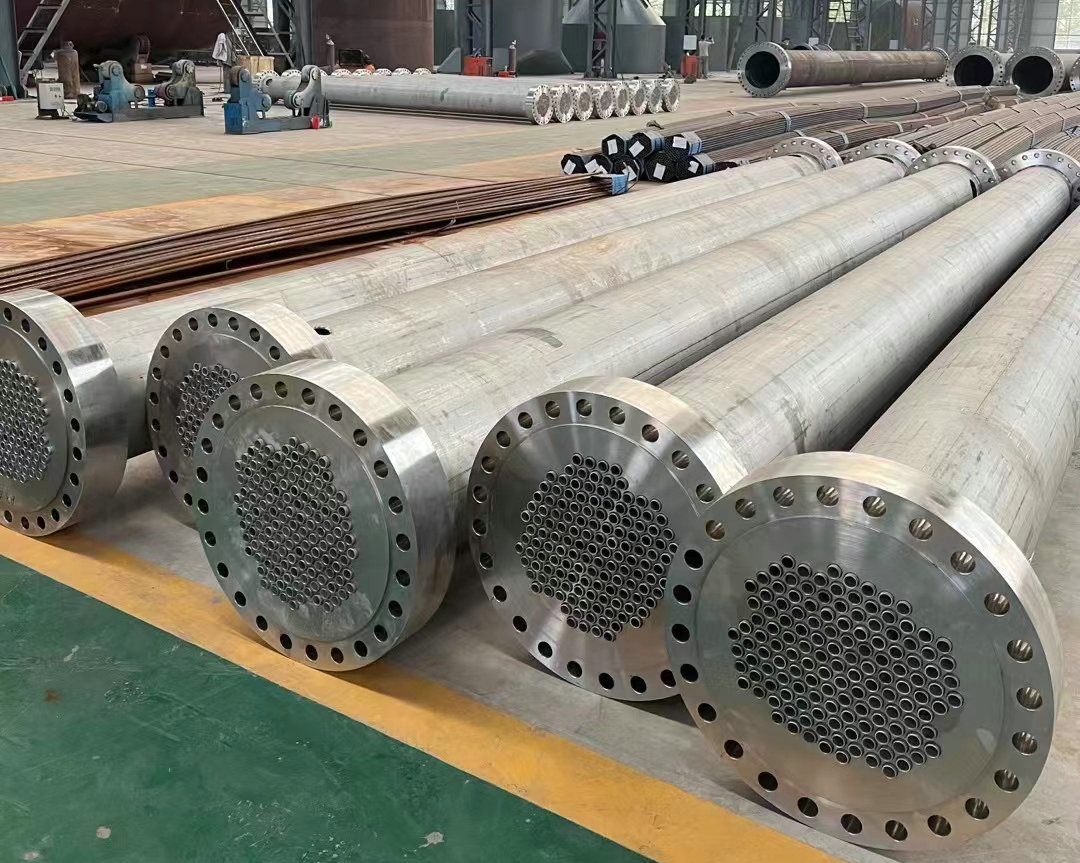
The tubular heat exchanger, also known as the shell-and-tube heat exchanger, remains one of the most widely applied designs in industrial heat transfer systems. It is valued for its mechanical robustness, ease of maintenance, and adaptability to a wide range of pressures, temperatures, and fluid types.
A critical aspect of its performance lies in the proper selection of tube materials, as these directly influence heat transfer efficiency, corrosion resistance, and service life.
A typical tubular heat exchanger consists of several key components: the shell, tube bundle, tube sheets, baffles, and end caps.
Shell: Usually cylindrical, containing the external flow path.
Tube Bundle: Composed of multiple parallel tubes fixed to tube sheets.
Baffles: Installed to direct shell-side flow and improve heat transfer efficiency.
Tube Sheets and End Caps: Provide mechanical sealing and allow for maintenance access.
The heat exchange process occurs as one fluid flows inside the tubes (tube side) and another flows outside the tubes (shell side). Heat is transferred through the tube wall by conduction and convection mechanisms.
Depending on the design and cleaning requirements, several configurations exist:
Fixed Tube Sheet Type: Simple construction and cost-effective but limited shell-side cleaning.
Floating Head Type: Allows for thermal expansion and easy maintenance, suitable for high-temperature differentials.
U-Tube Type: Provides flexibility under thermal stress and compact design, though tube replacement can be more difficult.
Each configuration requires careful material selection to accommodate thermal cycling, fluid chemistry, and mechanical load.
The tube material determines the thermal performance, corrosion behavior, and long-term stability of the exchanger. The most commonly used materials include:
Good thermal conductivity and mechanical strength
Economical option for non-corrosive or mildly corrosive fluids
Suitable for high-temperature and pressure operations
Excellent corrosion resistance in acidic, alkaline, or saline environments
Maintain mechanical strength under high temperature
Common in chemical, pharmaceutical, and food processing applications
Enhanced resistance to high temperature oxidation and creep
Used in systems operating under extreme conditions
Suitable for power generation and petrochemical environments
The choice depends on the operating conditions - fluid composition, temperature difference, pressure, and required maintenance intervals.
Several factors affect the efficiency and lifespan of tubular heat exchangers:
Thermal Conductivity: Determines the rate of heat transfer through tube walls.
Surface Finish: Smoother surfaces reduce fouling and improve fluid flow.
Corrosion Resistance: Prolongs equipment life and prevents leakage or contamination.
Mechanical Strength: Ensures stability under pressure and thermal expansion.
Modern design improvements, such as multi-pass flow arrangements, spiral baffle technology, and computational fluid dynamics (CFD) optimization, have further enhanced performance and compactness.
Tubular heat exchangers are widely used in:
Petrochemical plants: For crude oil heating and process cooling
Power generation: In boiler feedwater heating and steam condensation
Pharmaceutical and food industries: For sanitary and temperature-sensitive processes
HVAC systems and refrigeration: For heat recovery and energy efficiency
The selection of tube materials ensures each system maintains optimal thermal performance and operational reliability.
The efficiency and durability of a tubular heat exchanger largely depend on the appropriate selection of tube materials. Understanding the relationship between material properties, thermal dynamics, and operating conditions is key to designing a reliable and long-lasting system.
Carbon steel, stainless steel, and alloy steel each provide unique advantages that allow engineers to tailor performance to specific industrial needs, ensuring safe, efficient, and sustainable operation in modern process systems.
